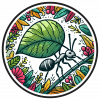Hello biologging community!
My name is Holly Cormack and I’m the new Conservation Technology Intern in the WILDLABS team.
We are researching what different biologgers are being used to study wildlife as part of the WILDLABS team’s work on The Inventory, our novel ongoing project to build a dynamic, collaborative, wiki-inspired database of conservation technology.
To build the movement ecology section of The Inventory we need your help to understand what different biologging tech is popular right now and what interesting work you are all doing with them. With this info we can then start adding these biologgers to our database and also feature some of your amazing work using them!
If you are using or have used biologgers in your research, we would be very grateful if you could answer the following questions in the comments below, or fill in our quick survey.
- What biologger models have you used or would recommend?
- What work were you using the biologgers for? (i.e. project goals, length, species and location)
- Do you have a page link to the specific biologger model or manufacturer’s website?
Thanks for your help!
6 September 2023 3:38am
Hola! We're currently testing ICARUS SigFox GPS tags on a diverse assemblage of birds and mammals in the Peruvian Amazon as part of an ongoing project. These tags use the SigFox IoT network to send data to the cloud and directly to MoveBank. They have previously been tested in Europe and South Africa (linked below).
Currently we're testing them on terrestrial and arboreal mammals in the Amazon, as well as birds, and have been getting promising results! These tags are developed by the MPIAB. We will continue testing them, and hope to share more next year.
6 September 2023 3:21pm
This blog post from CNX Software introduced using a LoRaWAN tracker to track cattle in Thailand. I think it can help shed some light on the possible applications of tracking other animals in conservation. The good thing about the LoRaWAN tracker is that it costs much less compared to cellular like 4G. It has super low power consumption, suitable for long-term tracking in remote outdoor scenarios. And of course, if there is no LoRa coverage, it is very easy and affordable to build LoRa coverage with a LoRaWAN Gateway that is less than 100usd. You can see more info about cattle tracking in Thailand via the link here.
7 September 2023 10:13am
Hello everyone!
So far, we’ve had a great response to our survey! As well as this discussion thread, we’ve had 20 survey responses and one emailed response! We’re learning about some very cool projects, including studying the development of social relationships and their stability during early life in Galapagos Sea Lions and tracking livestock grazing patterns in the Cabo Verde archipelago as part of a project to reduce the impacts of free grazing on threatened and endemic plant species.
If you’ve used any biologging tech for any other projects, we’d still love to hear from you! I’ll report more on our findings later.
7 September 2023 10:51am
Hello,
Thanks a lot for putting together this survey!
Just introducing our company, Nix, french based and most recent on the market as we conceived and produced IoT biologging trackers working on GPS/LTE-M/LPWAN networks with super high autonomy and lightweight for terrestrial animals. Already working on a nanosat version for next year, to cover territories without network at all.
Our trackers have been used primarily in the EU to study species behavior in mixed enclosures and for land use management at the animal park of Auvergne, home to 65 endangered species.
Take a look at the video and let me know if you'd like to discuss your own needs!











Diego Balbuena